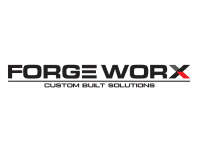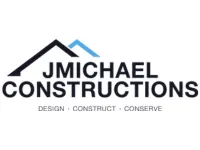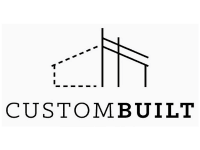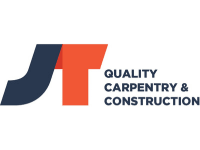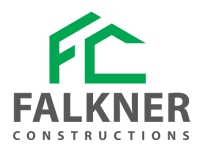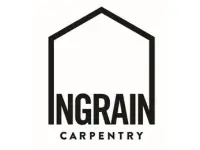Sydney is a bustling hub of construction activity, making estimating costs in Sydney a critical skill for builders navigating this competitive market. With high labour costs, fluctuating material prices, and strict local regulations, creating accurate and reliable estimates is essential for project success. From residential developments to large-scale commercial projects, cost estimation ensures budgets are managed effectively while maintaining profitability.
This guide explores the key challenges of construction estimating in Sydney and provides actionable strategies to help builders create reliable and comprehensive cost plans that ensure profitability and client satisfaction.
Key Challenges in Estimating Costs in Sydney
Estimating construction costs in Sydney comes with unique hurdles due to the city’s competitive market, urban environment, and strict regulatory framework. Builders must address these challenges to maintain project budgets and ensure client satisfaction.
1. High Labour Costs
Sydney’s booming construction industry drives demand for skilled trades, resulting in higher wages and labour costs.
Premium Wages: Carpenters, electricians, and plumbers often earn 20–30% more in Sydney compared to regional areas.
Labour Shortages: During peak construction periods, shortages force builders to pay overtime or hire subcontractors from other regions.
Example:
The average hourly rate for a carpenter in Sydney is $50–$70, compared to $40–$50 in regional NSW. This disparity can significantly inflate labour costs on large-scale projects.
2. Material Costs and Urban Logistics
While Sydney has better access to suppliers than rural areas, material costs can still vary widely due to demand and logistical constraints.
High Demand: Ongoing urban projects drive up prices for materials like concrete, steel, and timber.
Storage and Transport Issues: Limited space increases warehousing costs, while traffic congestion complicates timely delivery.
Example:
A spike in high-rise developments in the Sydney CBD recently led to a 10% increase in concrete prices, impacting builders working on smaller projects.
While Sydney’s urban construction projects face challenges like high demand and limited storage space, rural and regional projects bring their own unique logistical hurdles. Learn more about these in our guide to Regional Construction Estimating.
3. Compliance with Local Regulations for Estimating Costs in Sydney
Builders in Sydney must navigate some of the strictest building codes and regulations in Australia.
Permit Fees: Costs for Development Applications (DAs) and Construction Certificates (CCs) can add thousands to project budgets.
Energy Standards: Compliance with BASIX (Building Sustainability Index) requirements often involves additional costs for solar panels, insulation, or water-saving systems.
Noise Restrictions: Urban projects frequently face noise control measures that limit work hours and increase labour costs.
Insight:
Failure to comply with these regulations can lead to fines, redesigns, or delays, further driving up project costs.
Strategies for Estimating Costs in Sydney
Creating accurate estimates in Sydney requires builders to adopt a strategic approach that accounts for the city’s unique challenges. From leveraging technology to partnering with local suppliers, these strategies can help builders stay competitive while maintaining control over budgets.
1. Leverage Digital Tools for Estimating Costs in Sydney
Digital tools and software are essential for managing the complexities of estimating in Sydney. These tools provide real-time data and streamline the estimating process.
CostX and Buildsoft:
Integrate real-time labour and material costs into estimates.
Simplify quantity takeoff for complex projects like high-rise buildings.
Dynamic Updates:
Update estimates regularly to reflect changes in material costs, labour rates, or project scope.
Example:
A Sydney-based builder using CostX was able to adjust their estimate mid-project when steel prices rose by 8%, ensuring the budget stayed realistic and manageable.
2. Partner with Local Suppliers
Collaborating with local suppliers can reduce logistics costs and improve material availability, especially in Sydney’s urban environment.
Bulk Discounts:
Negotiate long-term contracts for better pricing on frequently used materials.
Just-In-Time Deliveries:
Minimize storage needs by scheduling deliveries to align with project phases.
Example:
A builder in Western Sydney saved 15% on timber costs by partnering with a local supplier who provided bulk discounts and reliable delivery schedules.
3. Account for Compliance Costs
Factoring in regulatory expenses during the estimating process is critical for avoiding unexpected costs later in the project.
Permit Costs:
Include fees for Development Applications, Construction Certificates, and special permits (e.g., heritage zones).
Energy Efficiency Standards:
Budget for compliance with BASIX requirements, such as solar panel installations, rainwater tanks, and efficient insulation.
Noise Control:
Consider costs for quieter machinery or adjusted work schedules to meet urban noise restrictions.
Example:
For a townhouse project in Inner Sydney, a builder allocated $15,000 for BASIX compliance, including double-glazed windows and water-saving fixtures. This upfront planning ensured seamless approval and avoided redesign delays.
4. Plan for Contingencies
No estimate is complete without a contingency plan to address unforeseen challenges. Builders should allocate 5–10% of the total project cost as a contingency fund for unexpected expenses, such as:
Material price surges due to market fluctuations.
Delays caused by adverse weather conditions.
Additional costs from changes in client preferences.
Tip:
Use historical data and recent market trends to determine the appropriate contingency percentage for your project.
Conclusion
Adopting these strategies can help builders in Sydney create accurate and reliable estimates that account for the city’s unique challenges. By leveraging digital tools, building strong supplier relationships, and planning for regulatory compliance and contingencies, builders can ensure project success while maintaining client trust.
By incorporating compliance costs early in the planning process and allocating contingencies for unexpected expenses, builders can create accurate estimates that keep projects on track and budgets in check. In a city as dynamic as Sydney, the ability to deliver reliable cost projections is not just a skill—it’s a competitive advantage.
Estimating costs in Sydney requires a strategic approach to overcome challenges unique to the city. For more insights into construction estimating nationwide, visit our detailed guide on Construction Estimating in Australia.
Ready to streamline your construction estimating process? At Matrix Estimating, we specialize in providing professional estimating services tailored to Sydney’s unique construction landscape. With our expertise, advanced tools, and commitment to accuracy, we help builders overcome challenges and achieve project success.
Contact us today
Get in touch with Matrix Estimating to learn how we can help your business save time, reduce costs, and deliver exceptional results. Let’s build Sydney’s future together.






